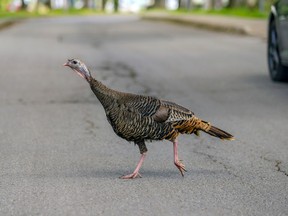This weekend’s citizen science event connects people to nature and helps monitor wildlife distribution around the world.

The Greater Montreal City Nature Challenge is underway this weekend, so don’t be surprised to see folks in their front yards or at the local park, pointing their smartphones at all manner of plants, animals, birds, butterflies and bugs.
This event got its start in 2016 as a competition between Los Angeles and San Francisco to see which urban population could find and document the most species of wildlife in their city. Now it has become an annual, four-day, global “bioblitz,” with more than 675 cities taking part, including about 40 in Canada. The international event is organized by the California Academy of Sciences and the Natural History Museum of Los Angeles County.
“This is a friendly world-wide citizen science event designed to connect people to nature while helping monitor wildlife species distribution around the globe,” said James Pagé, a species-at-risk and biodiversity specialist with the Canadian Wildlife Federation, which organizes the challenge across Canada. “The valuable data collected during the event can help track trends in biodiversity. Maybe we’ll be finding different species this year with such an early spring in most of Canada.”
Participants register to participate in the challenge and then download a free mobile app, such as iNaturalist, on their phones. Then they head outside and look for wildlife, whether it be a wild plant, insect, bird, animal or even fungi. They can also record sounds, such as birdsong. They upload the photograph or sound to the app, and it provides a suggestion as to the species observed.
This year’s contest began Friday, April 26 at 12:01 a.m. and runs to 11:59 p.m. on Monday, April 29.
Once all the observations are done, an online community of experts will collaborate to confirm the identity of the species observed by participants until May 5. Once two-thirds of those experts have confirmed the species identified, the observations are considered research-grade, and they are transmitted to a global biodiversity information facility where they can be used for international research.
The total number of observations and highlights from around the world will be announced May 6.
Katherine Collin is a member of the Campus Biodiversity Network and Technoparc Oiseaux, two local groups that advocate for biodiversity on the island of Montreal and are hosting the local version of the City Nature Challenge. She says the event is a way for the public to learn more about nature and the green spaces around them, while contributing in a real way to biodiversity preservation.
“Regardless of their expertise, everybody can step outside using the iNaturalist app and make observations of the world around them. That in itself is powerful because we know that even connecting for a short period of time with nature brings benefits to us,” Collin said. “Beyond that, every little gesture that can be made to document the biodiversity in our urban settings actually is a very powerful means of proving the ecological value of the green spaces in our cities.”
She said politicians at all levels are relying increasingly on this kind of documentation to make decisions about which spaces get protected and which get developed.
In 2023, 1.9 million observations were made around the globe and more than 57,000 species identified, including many rare, endangered or threatened species. Calgary won the 2023 cross Canada competition, with its citizens logging 9,185 observations out of Canada’s total of 74,972.